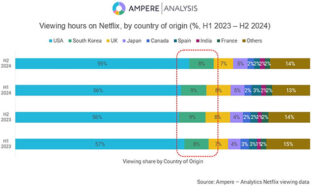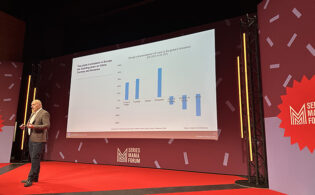The combined content spend of Disney, Comcast, Google, Warner Bros. Discovery, Netflix and Paramount will reach $126 billion this year, Ampere Analysis reports, accounting for more than half of all content expenditure worldwide.
The combined expenditure of the aforementioned top six will account for 51 percent of all global content spend. Ampere notes that this reflects a new high, despite the downturn in the market, rising from 47 percent in 2020.
Disney remains the biggest contributor, despite its cutbacks, accounting for 14 percent of film and TV content spend this year, boosted by it taking full control of Hulu, which added $9 billion to its expenditure. Comcast is second with YouTube third via its rev-share agreements with creators.
Across the top six, spending on originals hit $56 billion, 45 percent of their total spending since 2022.
Netflix leads in global streaming content, averaging $14.5 billion in annual investment in original and acquired shows every year since the pandemic. Further increases are expected in 2025, namely via sports investments.
Of the total $126 billion in content spend by the big six, $40 billion will be on the companies’ subscription services, including Disney+, Peacock and Paramount+. International has emerged as a key growth area for investments. Non-U.S. shows accounts for 40 percent of Paramount+’s 2024 spend and 52 percent of Netflix’s.
Peter Ingram, research manager at Ampere Analysis, commented, “Ongoing investment by major studios and streaming platforms into new programming will continue be key to keeping audiences engaged and entertained. We can expect that the content landscape will see low level growth in 2024 as production schedules recover from disruptions caused by the pandemic and the writers’ and actors’ union strikes. Looking forward however, while these top six providers will continue to account for the majority of spend, overall growth will plateau as companies look to refocus their output. This will include limiting commissioning volumes and prioritizing strategic investments and profitability to counter the current challenges of the media market.”






